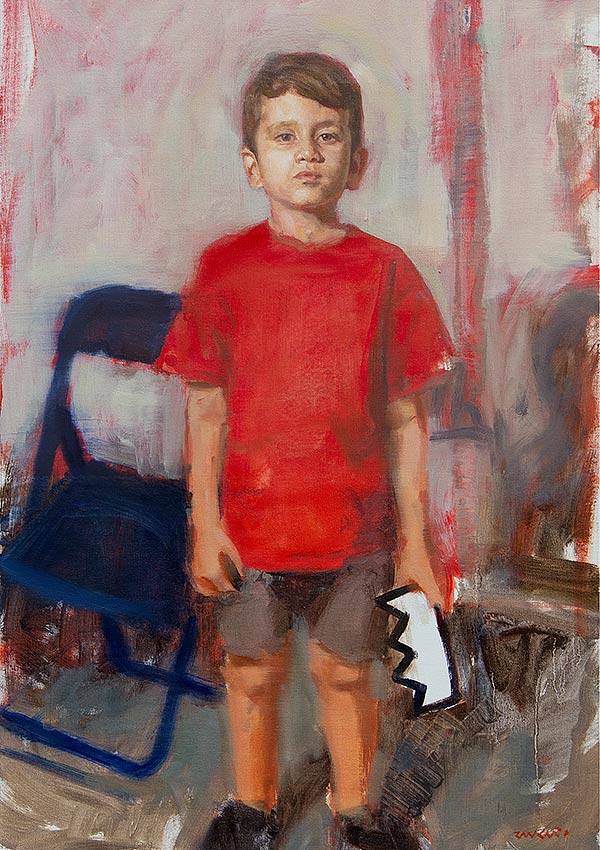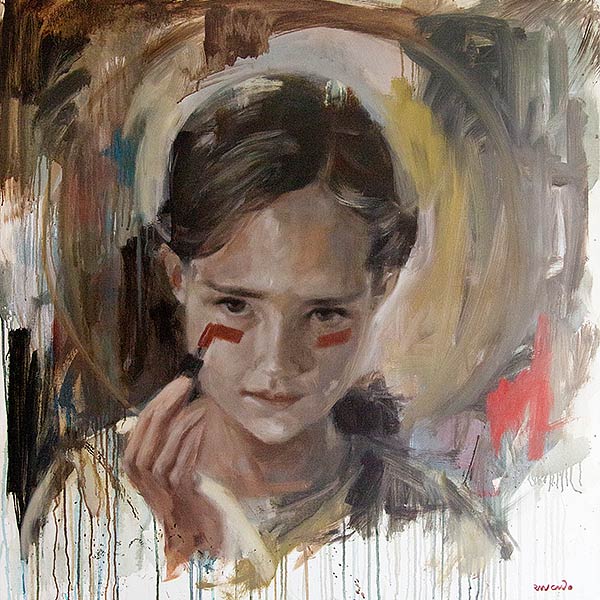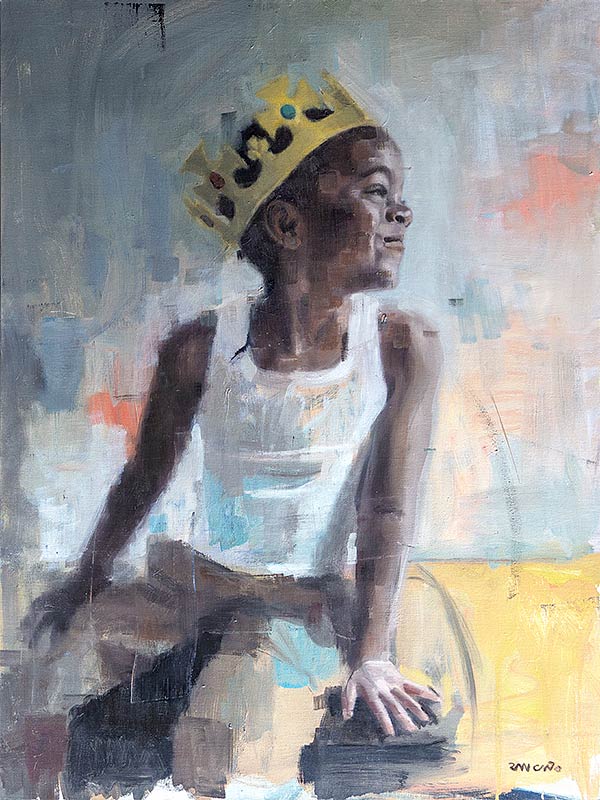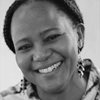Subtotal: $
Checkout-

How Funerals Differ
-

One Star above All Stars
-

Stranger in a Strange Land
-

Spaces for Every Body
-

Poem: “Consider the Shiver”
-

Poem: “No Omen but Awe”
-

Poem: “So Trued to a Roar”
-

Letters from Readers
-

Editors’ Picks: Dirty Work
-

Editors’ Picks: Millennial Nuns
-

Editors’ Picks: Directorate S
-

Letter from Brazil
-

Peace for Korea
-

Flannery O’Connor
-

Covering the Cover: Made Perfect
-

Calling from the Edge
-

The Disability Ratings Game
-

The Way Home
-

The Beginning of Understanding
-

Time for a Story
-

The Island of Misfit Toys
-

A More Christian Approach to Mental Health Challenges
-

Made Perfect
-

Mary’s Song
-

The Art of Disability Parenting
-

When Merit Drives Out Grace
-

Hide and Seek with Providence
-

Unfinished Revolution
-

Falling Down
-

The Hidden Costs of Prenatal Screening
-

The Baby We Kept
-

The World Turned Right-Side Up

The Lion’s Mouth
Mass shootings have made violent death seem normal. It’s not.
By Edwidge Danticat
March 25, 2022
A few years ago, on the eve of Christmas Eve, I headed to the nearby Aventura Mall to get my daughter Mira her first cellphone. The line to drive into the mall was endless. It was, I suspected, filled with people like me, who could no longer get anything on the internet that would be delivered before Christmas. The line at the store was also long, but not as long as the winding line of cars heading for the exit of the five-story parking structure after I had purchased the phone. I had felt lucky to have found a parking spot on the top floor when I arrived, but now I felt cursed. At the pace the cars were moving, I worried that I might still be sitting in my car on Christmas morning.
Just as I neared the second floor, I saw dozens of people racing into the parking structure. Among the many screams and voices was one of a woman calling for someone named Jackson. In the surreal way that one’s mind works at a time like this, I remember thinking, for a second, that she was calling the deceased singer Michael Jackson. Later I realized that had I been shot right then and there, my final thought on this earth would have been of Michael Jackson.
The crowd rushing past my car and the other cars stuck in the parking lot made driving out impossible.
“What’s going on?” I shouted at the people sprinting past.
The same question echoed from the mouths of other drivers both in front and behind me.
“There’s a shooter in the mall!” many of the fleeing said.

Carlos Antonio Rancaño, The Delicate Fight, oil on canvas, 2020 All artwork used by permission of Carlos Antonio Rancaño.
The pace of events quickened as people began to shout “Run! Run!” even as they were already running. It was obvious then that I too would have to run. The cars were at a standstill. Many of the drivers ahead of me had already abandoned their vehicles. I quickly turned off my car then put the keys – and that darn phone – in my purse. Then I heard a series of loud explosions echo through the parking lot. To my panicked ears, it sounded like bombs were going off nearby. Suddenly there were many more of us sprinting, running, dashing, more abandoned cars, and more parents screaming their children’s names. It was hard to tell as I weaved my way through a crowd of fleeing people, and unmoving cars, whether I was escaping or heading toward these explosions.
My adrenaline took over and I ran down the parking lot ramp until I was on the ground floor and outside. At the parking lot exit were several heavily armed police officers headed in the direction I’d just come from. This reminded me of the stories I’d heard after September 11, 2001, of first responders going into the World Trade Center as others ran out.
I was still hearing the explosions, which made me wonder whether the active shooter, or shooters, might not also be snipers who could be waiting to pick off the fleeing from the roofs of the many stores surrounding us. So I found a bush on the side of the parking structure and took cover there. The bush was part of a low hedge that was meant to soften the look of the parking structure concrete. I squeezed myself in between that hedge and the wall to catch my breath.
People were still running, still fleeing the mall. More police and emergency vehicles were coming in too. After a few minutes behind the hedge, I joined a group of shoppers heading toward a footbridge that led to the main road outside. Everyone was out of breath, all of us, walking again – and not running – for the first time since fleeing the mall. Then the flood of cell phone calls began. Many were still frantic. Some had left behind loved ones, who as far as they knew were caught up in a massacre.
My husband was with our two daughters at a holiday theme park called Santa’s Enchanted Forest. I texted him to let him know I was safe. I then went on Twitter and entered the words “Aventura Mall” in the search box. The first tweet I saw was written by Jacqueline Charles, a Miami Herald reporter, who happened to be in the mall hiding inside a storeroom closet with dozens of other people. I then called my niece who lived nearby. When she and her husband arrived, I got in their car, collapsed in the back seat, and burst into tears.
I was already counting the numbers in my head. Judging from the size of the mall and the booming explosions I’d heard, I believed that dozens of people had already died. I imagined the headlines and the breaking news banners. This one, I thought, would probably be called “The Christmas Massacre.”
It turned out to be a hoax, the most recent in a series at Florida malls. Jacqueline Charles learned that some young people had perpetrated it with an app that made the sounds of gunshots and bomb detonations, which were then amplified by speakers. In a few of the similar hoaxes, firecrackers were used to cause panic so that criminals could rob the stores.
When I first learned there hadn’t really been a massacre, I felt lucky, but also angry. Then I began making jokes. My greatest shame, I told my niece, would have been dying clutching that damned phone. As soon as I was reunited with my family, my mother-in-law reminded me how I had worried that Santa’s Enchanted Forest, a place filled with hundreds of distracted children and adults, much like the mall, might be a “soft target,” in modern terrorism or school-shooter speak. Still both my husband and I had kept to our plans. After all, these things always seemed to happen in other places, and to other people.
These days, our children not only read about dying violently, or see it on the internet, but they are also being trained to expect it, anticipate it, and even plan for it.
With every passing year, we accrue more formidable accounts of what it’s like to actually survive one of those massacres. The harrowing testimonies of the survivors of the shooting at Parkland, Florida’s Marjory Stoneman Douglas High School, where seventeen people died and seventeen others were wounded, the grace and eloquence of these young advocates, their efforts to include less privileged young people – including some young people of color, whose communities are chronically and disproportionately affected by gun violence – has been incredibly moving for me, especially as my daughters are approaching their age. As one of my daughter’s middle school teachers said when we went to our local March for Our Lives rally the day before her thirteenth birthday, this generation lives in great proximity to graphic, vivid trauma and pain. Yet they are also gifted and motivated enough and have enough tools and platforms to share that pain with the rest of us. These days, our children not only read about dying violently, or see it on the internet, or act it out, as some do, in video games, but they are also being trained to expect it, anticipate it, and even plan for it. One of the signs I found most striking at the rally was carried by an African American girl who reminded me of my younger daughter. Her sign simply read, “LET US GROW UP!”
Over time, I have come to think of my experience at Aventura Mall as a kind of drill, one not unlike the ones carried out at my daughters’ school and at many other schools around the United States. Soon after the Marjory Stoneman Douglas High School shooting, my daughters came home, each describing her own experience of the active shooter drill at their school. My younger daughter, Leila, was told to hide under her desk, which is wooden and small and even she realized would not protect her from an assault rifle. My older daughter, Mira, was told that if she happened to find herself in the hallway with the shooter nearby, she should find an unlocked classroom and run inside. Since her class had been advised to lock the door, I told her to run instead to the nearest bathroom or supply closet and take cover there instead. I hoped that wasn’t stupid, potentially deadly advice.
I have a very fat book on my bedside table called How Not to Die by Michael Greger, a physician and nutritionist, and Gene Stone. It explains in great detail how not to die from different ailments, ranging from heart disease to cancer, mainly by eating a plant-based diet and by exercising. It does not tell you, however, how not to die from school or mall shootings, or police brutality, or racialized vigilante violence.

Carlos Antonio Rancaño, King In I, oil on canvas, 2021
I picked up the book from the front table of my local independent bookstore soon after my experience at Aventura Mall. I was hoping it could counsel me on how to stay alive and how to keep my daughters alive in a way I might still be able to control. I also hoped that it would offer some guidance about mental and psychological survival, how not to let your soul die either. Though the lettuce-shaped letters on the book cover signaled its true content, I also wanted it around to remind me that death is something one can willingly put off for a little while.
I have spent a lot of time thinking about death and dying since that day, but even before that, since my mother died of ovarian cancer in 2014. As a writer, part of my job is to wrestle with mortality, both my own and that of others. I do this by writing about fictional people I give life to, throw untold atrocities at, then either redeem or destroy. In my own life, one way I wrestle with mortality is by keeping a pocket-size notebook with a list of instructions and counsel for my daughters, ranging from what they might call cringey (“Do not ever underestimate how awesome you are”) to the spiritual (“Keep some element of faith in your life – you saw how your grandmother’s faith brought her such solace and comfort as she was dying”). This, too, I took from my mother. The day she died, on the nightstand by her bed, I found an advice-filled cassette created for my three brothers and me. On the tape, she told us not to be too sad, since she’d lived a long and fulfilling life, as well as what I should wear to her funeral: a long-sleeved black dress, a hat, no open-toe shoes. That cassette, I now realize, is one of the ways she resisted dying.
As a terminal cancer patient, my mother understood quite well how not to die, even when you must die. Her tranquil yet firm voice on that cassette proves it. She knew we would be listening to her advice about the kind of clothes we should wear to her funeral and the way we should discipline our children long after she was gone. She still wanted to parent us from the grave.
At the end of my mother’s life, when we were constantly telling each other stories, I told her how I’d once read that rice came to our part of the world – the Caribbean – from the African continent, because an enslaved woman had hidden some grains in her hair. I’m not sure whether this story is true or not, but it is one of many stories about both food and our communal past that I love.

Carlos Antonio Rancaño, Princess, oil on canvas, 2019
“You mean her scalp was a garden?” my mother asked incredulously, even as her own scalp became more exposed as a side effect of chemotherapy.
The woman with the rice in her hair, I realize, was imagining a future in which she would exist in some other way than in her own flesh. She was trying to figure out not only how not to die, but how the people who would come after her would survive.
I am on the advisory board of an organization called Exchange for Change, which offers writing workshops at several Florida prisons. Twice a year, Exchange for Change holds a ceremony for the incarcerated students who have participated in the program. The last one I attended, before the onset of Covid-19, was at Dade Correctional Institution, a men’s facility.
Florida has one of the United States’ largest prison populations, which is primarily made up of people of color. The mural-covered cinder-block visitation room where the graduation took place reflects this too, though all the men were wearing the same color: blue. Exchange for Change offers classes ranging from memoir, essay, poetry, and graphic-novel writing to a Shakespeare performance class. The work of the incarcerated writers is always deeply felt, raw, and heart-wrenching. Their writing is filled with references to freedom, redemption, injustice, restitution, regrets, mistakes, and second chances, even as the readings and performances are interrupted by head counts and the buzz of the correctional staff’s two-way radios. Theirs is the urgent kind of writing one comes up with while trying to keep a body and soul alive. Some of the incarcerated writers have little hope of ever living outside prison walls, yet they want their words to journey beyond the layers of barbed wire around them, beyond even themselves.
As a writer, part of my job is to wrestle with mortality, both my own and that of others.
“Our pen is our penicillin,” the emcee, poet Eduardo “Echo” Martinez, said. “We are always trying to find the balance between becoming a man and an animal – a manimal.”
The Shakespeare class wrestled with questions of legacy and humanity, life and death. Some through Hamlet’s famous soliloquy:
To be, or not to be, that is the question:
Whether ’tis nobler in the mind to suffer
The slings and arrows of outrageous fortune,
Or to take arms against a sea of troubles,
And by opposing end them.
To die – to sleep …
Or Mark Antony’s in Julius Caesar:
Friends, Romans, countrymen, lend me your ears …
The evil that men do lives after them;
The good is oft interred with their bones …
This, I realized, is how these incarcerated writers were trying desperately not only to keep their bodies and souls alive, but to expand beyond themselves, to grow.
In The Devil Finds Work, James Baldwin’s 1976 book-length essay examining life via films, he wrote:
It is a terrible thing, simply, to be trapped in one’s history, and attempt, in the same motion (and in this, our life!) to accept, deny, reject, and redeem it – and, also, on whatever level, to profit from it. And: with one’s head in the fetid jaws of this lion’s mouth, attempt to love and be loved, and raise one’s children, and pay the rent, and wrestle with one’s mortality.

Carlos Antonio Rancaño, Beyond the Horizon, oil on canvas, 2019
While sitting between that hedge and the wall at Aventura Mall that Christmas Eve’s eve, I thought I felt the fetid jaws of the lion’s mouth around my neck, and I momentarily surrendered. With the possibility of dying feeling so actual, and so real, I was reminded yet once again that in the midst of life, we are in death, especially when death becomes so commonplace that even the youngest among us are watching their peers die, or are hearing about others dying, or are rehearsing not to die, as though they were warriors, fighters in battles and wars.
I keep thinking back to the young African American girl at the March for Our Lives rally, the one, among many, who was carrying a sign that read, “LET US GROW UP!” I want to make that plea for her and for my daughters too, whether it be from school or mall shootings, or police brutality, or racialized vigilante violence: Please, let them grow up. And for the adults among us, let’s keep growing.
“The Lion’s Mouth” is adapted from the Brooklyn Public Library “Message from the Library” lecture presented on June 17, 2018.
Already a subscriber? Sign in
Try 3 months of unlimited access. Start your FREE TRIAL today. Cancel anytime.











































